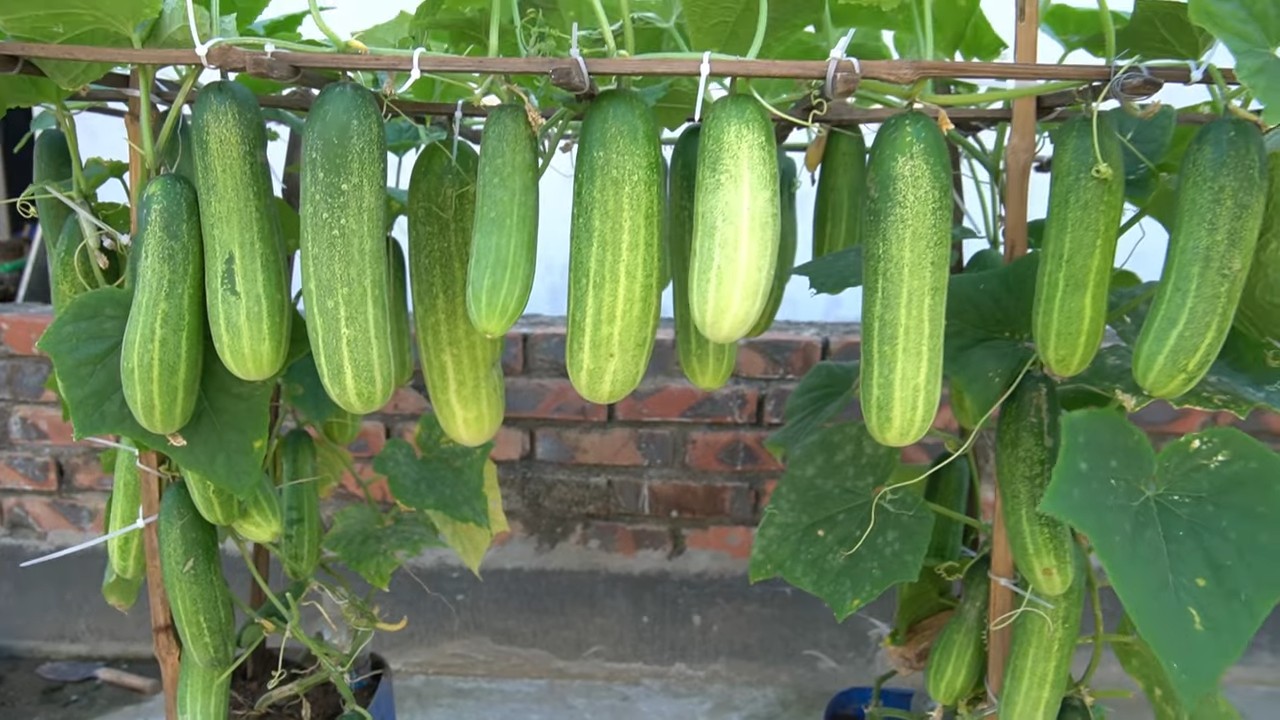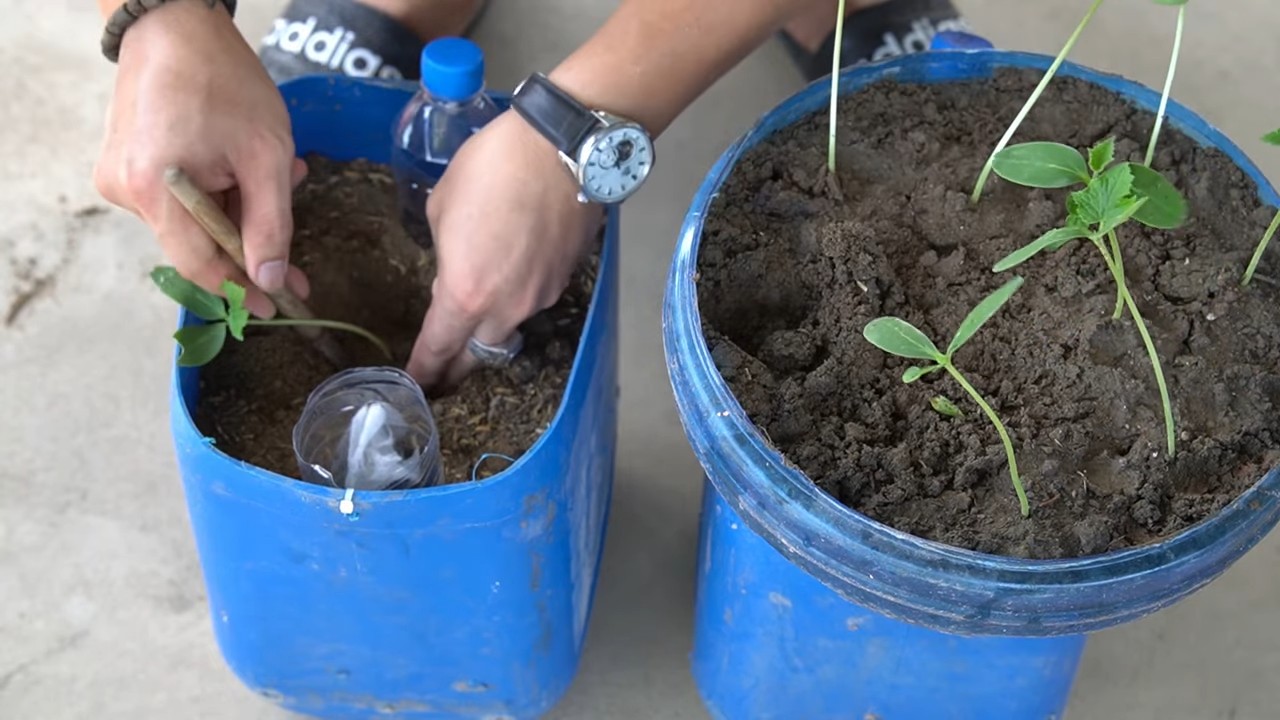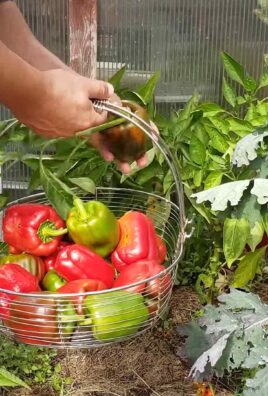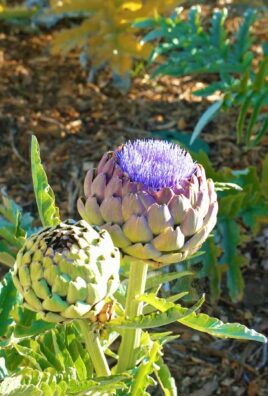Container cucumbers high yield – that’s the dream, isn’t it? Imagine plucking crisp, refreshing cucumbers straight from your patio, ready to be sliced into salads, pickled for later, or simply enjoyed as a healthy snack. Forget those bland, store-bought cucumbers; we’re talking about homegrown goodness bursting with flavor!
Growing cucumbers in containers isn’t just a modern trend; it’s a practice rooted in centuries of gardening ingenuity. Historically, container gardening allowed people to cultivate food in limited spaces, from rooftop gardens in ancient cities to window boxes in bustling urban centers. It’s a testament to our enduring desire to connect with nature and provide for ourselves, even when space is at a premium.
But let’s be honest, achieving a truly container cucumbers high yield can feel like a challenge. You might be struggling with stunted growth, yellowing leaves, or a disappointing harvest. That’s where these DIY tricks and hacks come in! I’m going to share some simple, yet effective, strategies to maximize your cucumber production, even in the smallest of spaces. We’ll cover everything from choosing the right container and soil to providing proper support and nutrients. Get ready to transform your container garden into a cucumber-producing powerhouse!

Growing a Bumper Crop of Cucumbers in Containers: My Foolproof Guide
Hey there, fellow gardening enthusiasts! I’m so excited to share my secrets for growing a ridiculously abundant cucumber harvest, all within the cozy confines of containers. Forget sprawling gardens – with a little know-how, you can enjoy crisp, delicious cucumbers straight from your patio, balcony, or even your sunny windowsill. I’ve experimented with different techniques over the years, and this method has consistently given me the best results. So, grab your gardening gloves, and let’s get started!
Choosing the Right Cucumber Variety
Before we even think about soil, let’s talk cucumbers. Not all varieties are created equal, especially when it comes to container gardening. You’ll want to choose bush or compact varieties that are specifically bred for smaller spaces. These guys won’t send out endless vines, making them much more manageable.
Here are a few of my personal favorites:
* Bush Champion: A classic choice, known for its high yield and disease resistance. The fruits are perfect for slicing.
* Spacemaster: As the name suggests, this variety is ideal for containers. It produces dark green, flavorful cucumbers.
* Patio Snacker: This one is a winner if you love snacking cucumbers. It produces small, crisp fruits that are perfect for eating fresh.
* Picklebush: If you’re a pickling fanatic like me, this variety is a must-try. It yields a ton of small cucumbers that are perfect for turning into delicious pickles.
* Little Leaf H-19: This is a newer variety that I’ve been experimenting with, and I’m loving it so far! It has smaller leaves, which means better airflow and less risk of disease.
Setting Up Your Cucumber Container Garden
Now for the fun part – creating the perfect home for your cucumber plants!
* Container Size: This is crucial. Cucumbers need room for their roots to grow, so opt for a container that’s at least 12 inches in diameter and 12 inches deep. A 5-gallon bucket works great, or even a large grow bag. Bigger is generally better!
* Drainage: Cucumbers hate soggy feet. Make sure your container has plenty of drainage holes to prevent waterlogging. If your container doesn’t have enough, you can easily drill a few extra.
* Soil: Use a high-quality potting mix that’s well-draining and rich in organic matter. Avoid using garden soil, as it can become compacted in containers. I like to mix my own using equal parts potting mix, compost, and perlite. The compost provides nutrients, and the perlite improves drainage.
* Location: Cucumbers are sun-worshippers! They need at least 6-8 hours of direct sunlight per day to thrive. Choose a spot that gets plenty of sunshine. If you’re growing indoors, you might need to supplement with grow lights.
* Trellis or Support: Even bush varieties can benefit from some support. A small trellis, tomato cage, or even a few stakes will help keep the plants upright and prevent the fruits from sitting on the soil. This improves air circulation and reduces the risk of disease.
Planting Your Cucumber Seedlings
Alright, let’s get those cucumbers in the ground (or, in this case, the container!).
1. Prepare the Container: Fill your container with the potting mix, leaving a few inches of space at the top.
2. Water the Soil: Thoroughly water the soil until it’s evenly moist but not soggy.
3. Plant the Seedlings: Gently remove the cucumber seedlings from their nursery pots. If the roots are tightly bound, gently loosen them with your fingers. Dig a small hole in the soil and plant the seedling, making sure the top of the root ball is level with the soil surface.
4. Space the Plants: If you’re planting multiple seedlings in the same container, space them at least 12 inches apart.
5. Water Again: Water the seedlings gently after planting to help them settle in.
6. Add Support: Install your trellis or support structure. Gently guide the cucumber vines onto the support as they grow.
Caring for Your Container Cucumbers: The Key to a Bountiful Harvest
This is where the magic happens! Consistent care is essential for a successful cucumber crop.
* Watering: Cucumbers need consistent moisture, especially during hot weather. Water deeply whenever the top inch of soil feels dry to the touch. Avoid overhead watering, as this can promote fungal diseases. I prefer to water at the base of the plant.
* Fertilizing: Cucumbers are heavy feeders, so regular fertilization is a must. Use a balanced liquid fertilizer every 2-3 weeks. Look for a fertilizer that’s specifically formulated for vegetables. I also like to add some compost tea to the soil every now and then for an extra boost of nutrients.
* Mulching: Add a layer of mulch around the base of the plants to help retain moisture, suppress weeds, and regulate soil temperature. Straw, wood chips, or even shredded leaves work well.
* Pruning: While bush varieties don’t require extensive pruning, you can remove any yellowing or dead leaves to improve air circulation. You can also pinch off any suckers (small shoots that grow between the main stem and the branches) to encourage more fruit production.
* Pest and Disease Control: Keep an eye out for common cucumber pests like aphids, cucumber beetles, and squash bugs. You can control these pests with insecticidal soap or neem oil. For fungal diseases like powdery mildew, improve air circulation by pruning and avoid overhead watering. You can also use a fungicide if necessary.
* Pollination: Cucumbers need to be pollinated to produce fruit. If you’re growing indoors or in an area with limited bee activity, you might need to hand-pollinate the flowers. To do this, use a small paintbrush to transfer pollen from the male flowers (which have a long, thin stem) to the female flowers (which have a small cucumber-like structure behind the flower).
Harvesting Your Delicious Cucumbers
The moment you’ve been waiting for!
* Harvest Time: Cucumbers are typically ready to harvest about 50-70 days after planting, depending on the variety. Check the seed packet or plant tag for specific information.
* Harvesting Technique: Harvest cucumbers when they’re the desired size and color. Use a sharp knife or pruning shears to cut the cucumber from the vine, leaving a small stem attached.
* Regular Harvesting: Harvest cucumbers regularly to encourage more fruit production. If you leave cucumbers on the vine for too long, they’ll become overripe and bitter.
Troubleshooting Common Cucumber Problems
Even with the best care, you might encounter a few challenges along the way. Here are some common problems and how to fix them:
* Yellowing Leaves: This could be a sign of overwatering, underwatering, nutrient deficiency, or disease. Check the soil moisture, fertilize if necessary, and look for signs of pests or diseases.
* Blossom End Rot: This is caused by a calcium deficiency. Make sure your soil is rich in calcium and water consistently. You can also add a calcium supplement to the soil.
* Bitter Cucumbers: This can be caused by stress, such as inconsistent watering, extreme temperatures, or nutrient deficiencies. Provide consistent care and avoid stressing the plants.
* Lack of Fruit Production: This could be due to poor pollination, nutrient deficiencies, or pests. Hand-pollinate the flowers, fertilize regularly, and control pests.
Boosting Your Yield: My Secret Tips
Want to take your cucumber harvest to the next level? Here are a few extra tips that I’ve found helpful:
* Succession Planting: Plant new cucumber seedlings every few weeks to extend your harvest season.
* Companion Planting: Plant cucumbers near beneficial plants like marigolds, nasturtiums, and basil to deter pests and attract pollinators.
* Epsom Salts: Add a tablespoon of Epsom salts to the soil every few weeks to provide magnesium, which can help improve fruit production.
* Watering Deeply: When you water, make sure to water deeply so that the water reaches the roots. This will encourage the roots to grow deeper and stronger.
* Observe Your Plants: Pay close attention to your cucumber plants and learn to recognize the signs of stress or disease. The sooner you catch a problem, the easier it will be to fix.
Growing cucumbers in containers is a rewarding experience that anyone can enjoy. With a little planning and care, you can have a bumper crop of delicious cucumbers right at your fingertips. So, get out there and start planting! Happy gardening!

Conclusion
So, there you have it! Mastering the art of achieving a container cucumbers high yield isn’t some unattainable gardening dream. It’s a tangible reality within your reach, even if you’re limited to a balcony, patio, or small backyard. We’ve explored the key elements, from selecting the right varieties and providing optimal growing conditions to implementing simple yet effective techniques like vertical support and consistent watering.
But why is this DIY approach a must-try? Because it empowers you to take control of your food source, enjoy the unparalleled flavor of homegrown cucumbers, and experience the sheer joy of nurturing life from seed to harvest. Store-bought cucumbers simply can’t compare to the crispness and freshness of those you’ve grown yourself. Plus, you’ll be reducing your carbon footprint by minimizing transportation and packaging.
Beyond the basic recipe for success, there’s ample room for experimentation and personalization. Consider exploring different cucumber varieties to find your favorites. Bush varieties like Spacemaster or Salad Bush are excellent choices for smaller containers, while vining varieties like Straight Eight or Marketmore will thrive with proper trellising. You can also experiment with companion planting. Marigolds, for example, can help deter pests, while dill can attract beneficial insects.
Don’t be afraid to get creative with your container setup. Upcycled materials like old buckets, laundry baskets, or even repurposed tires can make excellent planters, as long as they have adequate drainage. Just ensure they’re clean and food-safe.
And speaking of drainage, remember that proper drainage is crucial to prevent root rot. Make sure your containers have drainage holes and consider adding a layer of gravel or pebbles at the bottom to improve drainage.
We’ve covered a lot of ground, but the most important thing is to simply get started. Don’t let the fear of failure hold you back. Gardening is a learning process, and even experienced gardeners encounter challenges along the way. The key is to learn from your mistakes and keep experimenting until you find what works best for you.
We wholeheartedly encourage you to try this DIY trick for achieving a container cucumbers high yield. It’s a rewarding experience that will not only provide you with delicious cucumbers but also connect you with nature and enhance your gardening skills.
Once you’ve embarked on your cucumber-growing journey, we’d love to hear about your experiences! Share your tips, tricks, and challenges in the comments below. Let’s create a community of cucumber enthusiasts who are passionate about growing their own food. Your insights could inspire and help others achieve their gardening goals. So, grab your seeds, soil, and containers, and let’s get growing! Happy gardening!
Frequently Asked Questions (FAQ)
What are the best cucumber varieties for container gardening?
Choosing the right cucumber variety is crucial for success in container gardening. Bush varieties, such as Spacemaster, Salad Bush, and Patio Snacker, are specifically bred for compact growth and are ideal for smaller containers. These varieties typically produce shorter vines and require less support. Vining varieties, like Straight Eight, Marketmore, and Armenian cucumbers, can also be grown in containers, but they require sturdy trellises or other vertical support systems to accommodate their longer vines. Consider the size of your container and the amount of space you have available when selecting a variety. Also, look for varieties that are disease-resistant, especially if you live in an area with common cucumber diseases.
How big should my container be for growing cucumbers?
The size of your container will depend on the cucumber variety you choose. For bush varieties, a container that is at least 12 inches in diameter and 12 inches deep is generally sufficient. Vining varieties, which have more extensive root systems, will require larger containers, ideally 15-20 inches in diameter and depth. Ensure the container has adequate drainage holes to prevent waterlogging, which can lead to root rot. Using a larger container provides more room for the roots to grow and access nutrients, which can contribute to a higher yield.
What type of soil is best for container cucumbers?
Cucumbers thrive in well-draining, nutrient-rich soil. A good potting mix specifically formulated for vegetables is an excellent choice. Avoid using garden soil in containers, as it tends to compact and doesn’t drain well. You can also create your own potting mix by combining equal parts of compost, peat moss (or coconut coir), and perlite or vermiculite. Compost provides essential nutrients, peat moss or coconut coir helps retain moisture, and perlite or vermiculite improves drainage and aeration. Adding a slow-release fertilizer to the potting mix at planting time can provide a steady supply of nutrients throughout the growing season.
How often should I water my container cucumbers?
Cucumbers are heavy drinkers and require consistent watering, especially during hot weather. Check the soil moisture daily and water when the top inch feels dry to the touch. Water deeply, ensuring that the entire root ball is moistened. Avoid overhead watering, as this can promote fungal diseases. Instead, water at the base of the plant or use a soaker hose. During periods of intense heat or drought, you may need to water your cucumbers twice a day. Mulching around the base of the plant can help retain moisture and reduce the need for frequent watering.
How much sunlight do container cucumbers need?
Cucumbers need at least 6-8 hours of direct sunlight per day to thrive. Choose a location for your containers that receives ample sunlight throughout the day. If you live in a particularly hot climate, providing some afternoon shade can help prevent the plants from overheating. If you don’t have access to a sunny location, you can supplement with grow lights.
How do I fertilize my container cucumbers?
Cucumbers are heavy feeders and require regular fertilization to produce a high yield. Start by incorporating a slow-release fertilizer into the potting mix at planting time. Then, supplement with a liquid fertilizer every 2-3 weeks throughout the growing season. Use a balanced fertilizer with an NPK ratio of 10-10-10 or 14-14-14. You can also use organic fertilizers, such as compost tea or fish emulsion. Avoid over-fertilizing, as this can lead to excessive foliage growth and reduced fruit production.
How do I support my container cucumbers?
Vining cucumber varieties require support to grow vertically. Trellises, stakes, cages, or even netting can be used to provide support. Install the support system at planting time to avoid disturbing the roots later on. Train the vines to climb the support by gently guiding them and tying them loosely with twine or plant ties. Vertical support not only saves space but also improves air circulation, reduces the risk of disease, and makes harvesting easier.
How do I prevent pests and diseases in my container cucumbers?
Regularly inspect your cucumber plants for signs of pests and diseases. Common cucumber pests include aphids, cucumber beetles, and squash bugs. You can control these pests by handpicking them off the plants, using insecticidal soap, or introducing beneficial insects like ladybugs. Common cucumber diseases include powdery mildew, downy mildew, and bacterial wilt. Prevent these diseases by providing good air circulation, avoiding overhead watering, and using disease-resistant varieties. If you notice signs of disease, remove the affected leaves or plants immediately.
When should I harvest my container cucumbers?
Harvest cucumbers when they are the desired size and color. The specific size and color will depend on the variety. Generally, cucumbers are ready to harvest when they are firm to the touch and have a deep green color. Overripe cucumbers can become bitter and seedy. Harvest regularly to encourage continued fruit production. Use a sharp knife or pruning shears to cut the cucumbers from the vine, leaving a small stem attached.
Can I grow cucumbers in containers indoors?
Yes, you can grow cucumbers in containers indoors, but it requires providing them with adequate light and warmth. Use grow lights to supplement natural sunlight and ensure that the plants receive at least 12-14 hours of light per day. Maintain a consistent temperature of 70-80°F (21-27°C). Hand-pollinate the flowers to ensure fruit production, as there will be no bees or other pollinators indoors.





Leave a Comment